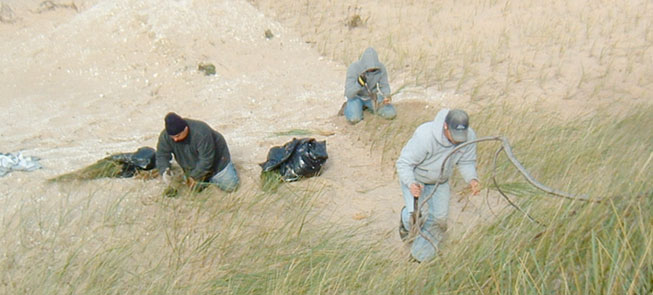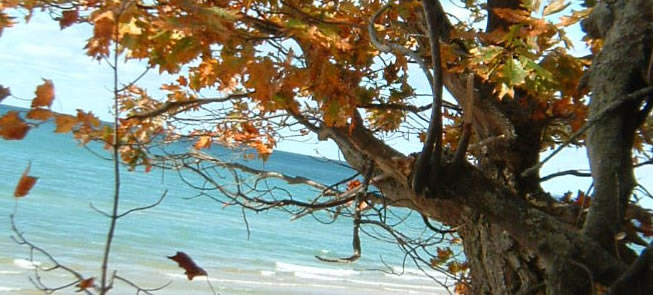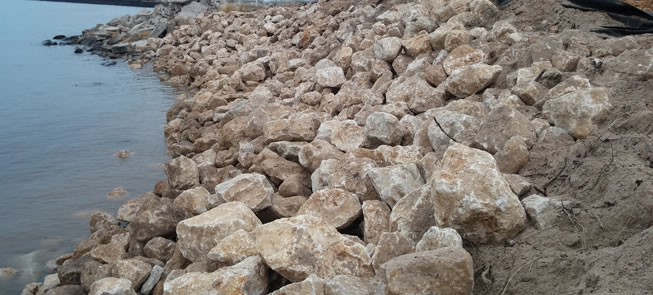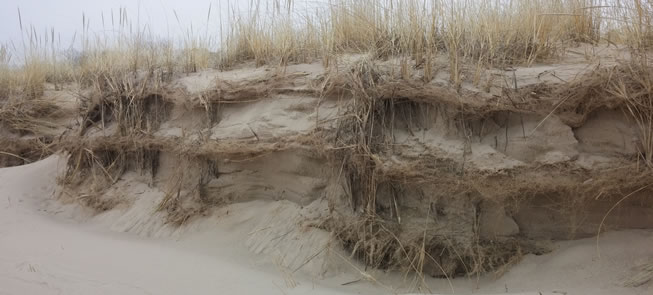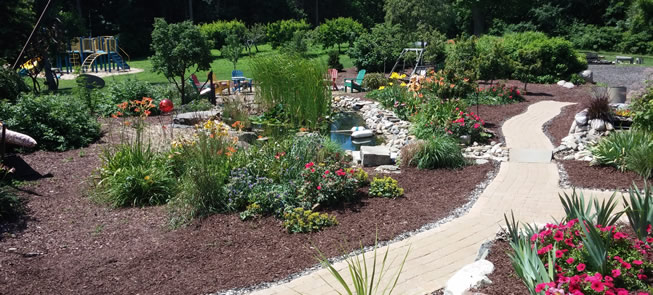What do you see when you look out at the snow covered ground in the winter months? Does it appear dead to you? A frozen ice cube of inactivity and death? I will admit that, during the month of March, when I am eagerly awaiting the glorious explosion of life in the spring, the winter landscape does appear barren and dead. However, nothing could be further from the truth.
Many, many things are happening in the creation, if we just put on our coats and quietly take the time to notice.
Break off the tip of a branch on the maple tree outside your window. As soon as we start to get the freeze thaw cycle of late winter you will see sap icicles forming whenever it freezes at night. Not only can this produce maple syrup for our pancakes, but it also causes the buds to swell as the leaves begin to form inside.
Carefully pull the snow away from the base of a dead tree in the forest to uncover the moss, dead leaves and debris mixed on the forest soil. You will find that it is teeming with life. It is known as the subnivian environment. Often, the snow forms a bit of an open air pocket where it is easier for organisms to live. The cover of snow keeps the temperature stable around the freezing point. Certain fungi and molds continue to break down the organic matter and dead organisms that are buried beneath the snow. Insects, spiders and mites feed on each other and on the insects that are in cocoons or that are dormant.
The mice and short tailed voles are adept at using these open pockets as part of their intricate trail system that brings them to the seed and insects they eat as food, as well as protecting them from the hungry predators that attack them when they run across the surface. I am always amazed at the number of these trails I see when the snow melts just right to expose them before the rest of the snow is gone. Also, I get frustrated that they often eat the roots and eyes off my favorite perennials so that there is nothing but an empty pocket in the ground where my plant was the year before.
Study the tracks that the winter creatures leave. When we walk in the woods or ride in the sleigh behind our mules, we often see the signs of fascinating events that have occurred. The tracks of the weasel or shrew reveal that they have been going in and out of the mouse trails or chipmunk dens hunting for food. Tracks and wing prints in the snow with bits of fur or feathers show where a hawk or an owl has caught a bird or a rabbit for its dinner. Tracks reveal that even beneath the snow small animals are not completely protected from the larger predators. Fox and coyotes hunt mice by sound, breaking through the crust with their paws to trap the victim underneath. I have read that the fearsome gray owls can hear a vole under the snow from thirty yards away. They swoop above the spot on silent wings, punch through the crusted snow with fisted claws and snatch the unsuspecting vole out of its “protecting” burrow. (I have had the privilege of holding several of these amazing predators through the years -– but, that is another story.)
We have enjoyed following the deer or turkey trails through the woods and fields to see where they have been going and what they have been feeding on. Sometimes our dogs will chase the animal out of hiding for us to get a better look. That might be the only way to see a ruffed grouse that has burrowed under the biggest and thickest spruce for protection from weather and predators.
Wintertime is often the best time of year to observe many of the area birds as they come to the bird feeders to eat the banquet that we have set out for them. Out in the woods you can use your ears to pinpoint the location of woodpeckers. If you wait quietly, you can see them circle a tree, looking for food in the cracks of the bark. In a nearby stream, where the water movement keeps it from freezing in even the coldest weather, flocks of ducks and geese congregate for food and protection. I am told that a heated birdbath is a real draw for birds in the winter.
Go on, get out of your easy chair and warm house. Put on your outdoor clothes and check out the wonders that God has created in the winter. You will be healthier for it, and, your heart will be filled with amazement at His handiwork.
Oftentimes we can also be so blind to spiritual life that exists in His church, among fellow saints. We are often looking for something that is dazzling or noisy or earth shaking. Often God works beneath the surface to quietly build His church and gather His people. It certainly is not normally through the means of events that are of great newsworthy proportions. It is through the wonder of the preaching of the Word of the gospel from week to week, Sunday after Sunday, and through the quiet witness of His people to fellow sinners, that God saves and builds His church. We mustn’t look for or be taken in by great numbers, loud music, or claims of signs and wonders. We should look beneath the surface of external things to see the life of the Spirit and the faithfulness of the preaching in the church. Of course, if there is a frigid exterior and lack of hospitality and love we must question whether there is life within. Lord, help us to see Thy power and work in the creation, and even more, in the church, among Thy saints.
Lost Lamb
Sad and lonely though I be,
The Lord my shepherd cares for me.
The snow may fall, the winds may blow,
The Lord shall find me this I know.
When lost, alone, and bruised in the wild,
I hear my shepherd, “Come my child”.
My soul o’erwhelmed by deaths dark vale,
Calmed by His gentle, ”All is well”.
He will feed and bed this little lamb,
Forgiveness and hope fed by His hand.
When finally at peace I’m laid to rest,
In His warm white robes will I be dressed.
Deane Wassink
March, 2003

